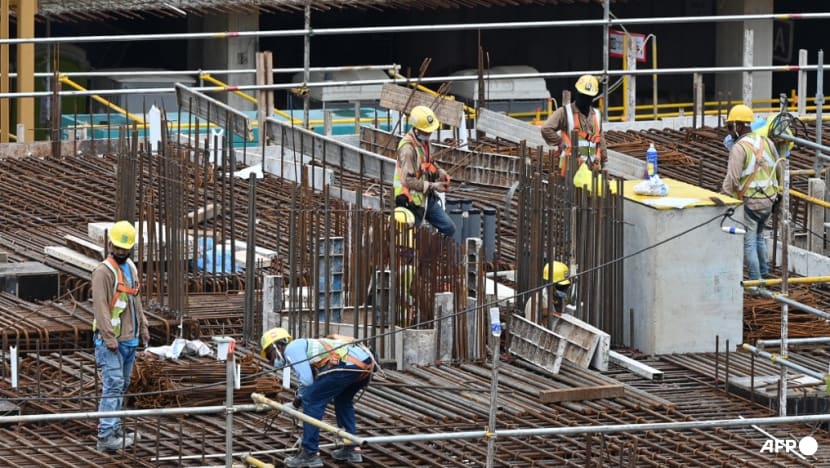Maximum fines for workplace safety breaches will more than double to S$50,000 from Jun 1

Workers at a construction site in Singapore on Sep 14, 2021. (File photo: AFP/Roslan Rahman)

This audio is generated by an AI tool.
SINGAPORE: Maximum fines for workplace safety breaches will go up from S$20,000 to S$50,000 (US$37,000) from Jun 1, the Ministry of Manpower (MOM) said on Monday (May 27).
It will also be mandatory from next month for construction sites with a contract sum of S$5 million or more to install surveillance cameras at high-risk locations.
The increased sum is to act as a “stronger deterrence” against offences under the Workplace Safety and Health (WSH) Act Subsidiary Legislation that could result in death, serious injury or serious harm, said the ministry.
Such offences include failing to provide suitable personal protective equipment and not warning of hazards that may cause serious harm.
“The increase in maximum fines is a proactive step towards strengthening ownership and accountability of WSH, particularly among senior company leadership who are responsible for shaping the safety culture at the workplace,” added MOM.
VIDEO SURVEILLANCE
Although there were improvements, MOM said the construction sector remained a top contributor of fatal and major injuries across sectors in 2023.
To further improve the sector, all sites with a contract sum of at least S$5 million will be required to install a video surveillance system (VSS) at worksite locations where high-risk work activities are conducted.
“By enabling remote monitoring and video capture, the VSS acts as a deterrent for unsafe workplace behaviours, provides valuable training resources for companies, and offers insights for investigations of safety incidents and near-misses,” said MOM.
“This will foster a proactive approach to WSH management, and promote a culture of incident prevention in workplaces.”
The tightened measures come after Singapore marked record lows for workplace fatal and major injury rates last year.
The workplace fatality rate fell below 1 per 100,000 workers in 2023, the first time it went under that mark apart from 2020 when work was disrupted by the COVID-19 pandemic.












